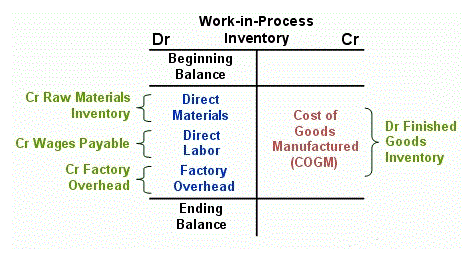
The opposite of comprehensive income is narrowed-down income or income from its main operation. To get a more inside look at an organization, look for other statements that are from previous 10 years trial balance of financial records and try to spot a trend. It will assist you in determining the risk-to-reward ratio even before you invest in the company. Below is a break down of subject weightings in the FMVA® financial analyst program.

Prepping for Subsidiaries vs. Parent Companies
Net sales is the gross amount of Sales minus Sales Returns and Allowances, and Sales Discounts for the time interval indicated on the income statement. The current asset that represents the amount of interest revenue that was reported as earned, but has not yet been received. Note that the $95,000 appears as a negative amount because the outflow of cash for capital expenditures has an unfavorable or negative effect on the corporation’s cash balance. The $15,000 is a positive amount since the money received has a favorable effect on the corporation’s cash balance. The $30,000 received from selling an investment also had a favorable effect on the corporation’s cash balance.
- Consolidated financial statements combine the finances of a parent company and its subsidiaries into one report.
- An accounting method wherein revenues are recognized when cash is received and expenses are recognized when paid.
- If a corporation disposes of an asset that is no longer used in its business, the amount received should not be included in its sales revenues.
- Similarly, the amount not yet allocated is not an indication of its current market value.
- For subsidiaries excluded from the consolidation process, their financial statements will be presented separately from the parent company’s consolidated statements.
Gains and Losses

If reclassification ceased, then there would be no need to define profit or loss, statement of comprehensive income or any other total or subtotal in profit or loss, and any presentation decisions can be left to specific IFRS standards. It is argued that reclassification protects the integrity of profit or loss and provides users with relevant information about a transaction that occurred in the period. Additionally, it can improve comparability where IFRS standards permit similar items to be recognised in either profit or loss or OCI. Add a heading to the report that identifies it as an income statement to complete your income statement. Fill in your company’s information as well as the income statement’s reporting period.
Other Information Pertaining to Financial Statements
Larger firms that experience such financial situations are more likely to have OCI items. Not only does this information boost investor trust and empower stakeholders to make data-driven decisions, but it also keeps your company compliant with regulatory standards. That means all kinds of revenues are recorded in the revenue sections no matter those revenues are realized or not. Double Entry Bookkeeping is here to provide you with free online information to help you learn and understand bookkeeping and introductory accounting.

The SCF is necessary because the income statement is prepared using the Retail Accounting accrual method of accounting (as opposed to the cash method). In other words gains or losses are first recognised in the OCI and then in a later accounting period also recognised in the SOPL. In this way the gain or loss is reported in the total comprehensive income of two accounting periods and in colloquial terms is said to be ‘recycled’ as it is recognised twice.
This is also true of the $20,000 of cash that was used to repay short-term debt and to purchase treasury stock for $2,000. On the other hand, the borrowing of $60,000 had a favorable or positive effect on the corporation’s cash balance. The net result of the four financing activities caused cash and cash equivalents to increase by $28,000. For example, if a florist sells its old delivery van, the amount received is not included in its sales revenues. The reason is its main business activities involve buying and selling floral products (not buying and selling delivery vehicles). A corporation is required to issue annual financial statements, but it is common for a corporation to prepare monthly financial statements for its management.

- This analysis aids in determining the quality of earnings, as persistent negative OCI may suggest a company’s net income is not fully reflective of its economic reality.
- But for investor relation purposes, it creates one combined financial statement periodically instead of publishing stand-alone reports for individual entities.
- This provides a link between a corporation’s income statement and its balance sheet.
- Cash and other resources that are expected to turn to cash or to be used up within one year of the balance sheet date.
These and other financial ratios can be found in our Financial Ratios Explanation. Some U.S. corporations have accounting years that end on a date other than December 31. For example, a corporation could have an accounting year that begins on July 1 and ends on the following June 30.
Establishing the scope and purpose of your consolidated financial statements helps you stay compliant and avoid misunderstandings during the compilation process. Countingup is the business current account with built-in accounting software that allows you to manage all your financial data in one place. With features like invoicing on the go, receipt capture tools, tax estimates, and cash flow insights, you can confidently keep on top of your business finances wherever you are. In particular, the inclusion of unrealised profits on the statement provides a sort of safety net for your business. If your business is struggling, but you have a large amount of money in assets with unrealised gains, you can sell off those assets to help you make ends meet.
- By: saqartvelo
- 0 comment
